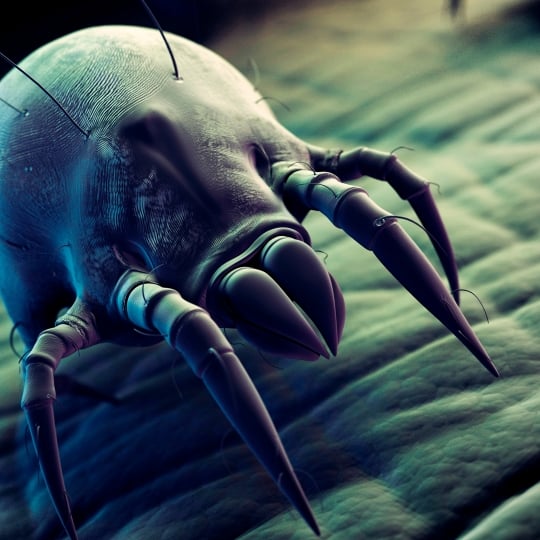Modes of Transmission

Sarcoptes scabiei is the scabies mite or the itch mite. The mites mate on the surface of the skin. Then, the female mites burrow into the upper layers of the skin (stratum corneum or stratum granulosum) and lay their eggs there. The disease caused by this is called scabies and is characterised by itching, nodules, and pustules in the skin. After hatching, the larvae migrate back to the skin surface and develop into adult mites.
The mites are usually transmitted through direct skin contact. However, longer skin-to-skin contact is necessary for transmission (5-10 minutes), so there is no danger from shaking hands or hugging. Contaminated laundry can also pose a small risk of transmission, even though the mites do not remain infectious for long outside the human host. To avoid transmission through textiles, they should be washed at least at 50°C for at least 10 minutes or heated in the dryer.
Hand disinfectants are not effective against itch mites. If contact is suspected, hands should be washed thoroughly.
